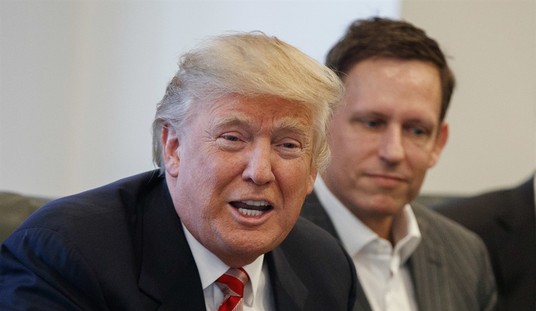
In developing the Growth and Opportunity Project‘s Autopsy of the 2012 election (pdf), the Republican National Committee correctly identified the reason for the party’s loss, but failed to recommend a coherent strategy to reverse it.
President Obama won by defining his opponent in a negative way, and marrying modern technology with old-fashioned boots on the ground. Republicans can do those things even better than he did, but doing so will require radically reforming the party.
My response to the report is in three parts:
The most important sentence in the whole report is this one about the Obama campaign:
Marrying grassroots politics with technology and analytics, they successfully contacted, persuaded and turned out their margin of victory. (p. 24)
That’s the key realization: Obama won by a strong Get Out The Vote effort, not on policy. But it looks like the RNC is taking the wrong lesson from 2012, and attempting to mimic superficially the features of the Obama campaign, and also to change the Party’s policy platform.
Michael Patrick Leahy, writing at Breitbart.com, notes that in-person GOTV gets only four mentions in the entire document.
To win future elections — and indeed to remain relevant as a political party — Republicans must do as the report hints, and turn the party inside out. The RNC is correct that it needs a radical reformation, but fails to describe one.
Localism, Not Demographics
The report fails to provide a vision because it focuses on “Demographic Partners” where it should see only Republicans. No special methods are needed to reach out to people based on their skin color or accent. Rather, reaching out to anyone requires an acceptable messenger.
The report is right to say, as on page 8, that Hispanics, for instance, will not listen to the Republican message if they believe Republicans don’t want them here. More generally, the Obama campaign successfully painted Republicans as not on the voter’s team. Once the team identification was made, nothing Mitt Romney said made a difference.
One of the best ways to appeal to people is with other people who look, dress, speak, act, and think the way they do, and who listen. That applies to all people, no matter what their skin color, whether rich or poor, native speaker or new immigrant.
The “Demographic Partners” section of the report is not integrated into the GOTV mechanism. The report envisions holding events in majority-minority areas, but doesn’t describe how those can have any lasting impact.
The RNC should establish a grassroots program to help grow the Republican share of the minority vote and begin by targeting it in red states with significant minority populations.The plan would outline anticipated demographic changes, recent electoral history, whom we should target and some suggestions on how that could be done. This would be a reasonably inexpensive program and only require one staffer at a state party to coordinate the effort. It is also a good candidate program for matching funds from out-of-state donors. (p. 14)
That last two sentences of that actually says they really aren’t going to fund the effort. As hinted on page 46 in a different context, grassroots outreach and organizing should command the lion’s share of the Party’s budget.
A local precinct worker (“precinct committeeman”, “precinct chair” or “captain” — from now on: PC) walking his own streets and knocking on the doors there knows the culture of the community in which he lives. He or she has automatic acceptance that an outsider on the phone, or even standing on those doorsteps, will never have.
Rather than reaching out to people based on their membership in some minority group or class of people, the RNC should use every event, every message, and every spare dollar it has to recruit PCs in every precinct it can. We would expect that the PC would look and act like most of the people in that precinct. In any case, being local they would have a greater acceptance level in the community.
The same method of outreach is needed in every community, tailored to its unique setting by the only people who know how to tailor it. Local people can develop ongoing relationships with the voters that just aren’t possible with phone banks or advertising, no matter how well targeted the communication is.
Even social media, while helpful, doesn’t cover the territory. People don’t organize themselves geographically on social media, but by their interests. Since we elect people based on where they live, we have to go there to elect them. The way to do it is to use the people who are already there.
Continuous Improvement
With regard to the techniques of organizing campaigns and getting people to the polls, the committee says wisely,
We cannot leave anything to intuition, gut instincts or “traditional” ways of doing things.
The need to introduce a process of continuous improvement is clear. As someone who only got involved in the nuts and bolts of politics in 2009, it has been maddening to hear campaign consultants and “experts” explain the way things are done, but not be able to give more than anecdotal evidence for why they are done that way.
After their 2004 loss, the Democrats — and in fact the entire leftist establishment — developed a model of improvement based on the scientific method. Conservatives will likely be more comfortable with a business-oriented metaphor. The effect will be the same: compare methods and messages against one another and use what actually works, given the resources available.
The goal for the last couple of decades has been to develop ever-better methods of microtargeting voters: classifying as well as possible every voter and delivering only the messages to which that voter will likely respond, based on their characteristics on file.
Team Obama — and Karl Rove — prefer an approach targeting individuals by identifying them from lots and lots of data, with probabilities gleaned from people who have similar traits.
Rove described microtargeting in the Wall Street Journal, noting that
Republicans historically did this better, but they microtarget once in the late spring or early summer, hoping this snapshot will remain stable through election day. Team Obama integrated polling data into their voter file and frequently did large surveys with short questionnaires. This steady flow of attitudinal information gave them a dynamic view of the electorate’s constantly changing opinions, and allowed them to constantly update and refine their microtargeting.
Team Obama used their own GOTV calling to track how voter sentiment was changing, in effect replacing traditional polling with their own. Rove implies that given enough money he can do the same thing for his side.
As Aaron Goldenberg wrote in an excellent post at FreedomWorks,
Rove’s contention is the following: By hiring an “army” of mathematicians and data analysts as Obama did in 2012, the RNC or the 2016 Republican Presidential nominee can sift through voter files in order to rank and track likely voters. This is what marketers attempt to do when they sell soap. Unfortunately, politicians are not soap and no ad in Field and Stream of Mitt Romney and his lovely wife wrapped in white bath towels hopping out of the shower holding bars of Dove will make voters more likely to vote. The reason is simple. Voters HATE politicians. We hate them. We do not trust them. When people knock on our door or call us on the phone asking for our vote, we lie just to get rid of you.
Here I disagree strongly with Goldenberg, from both personal experience and from the literature on the subject. It’s not that he’s wrong about some people not liking personal contact, but that he paints it with far too broad a brush. People dislike telephone calls and visits from strangers at the wrong time of day, but they like text messages, telephone calls, and visits from people they know.
Michael Patrick Leahy, writing at Breitbart.com, said:
Yet most post game electoral analyses, especially the “Inside the Cave” report published by well respected new media firm Engage DC, made clear that the 2012 Obama campaign established that the critical initial contact in establishing an understanding of voter behavior takes place in the person-to-person communication that takes place on the front doorstep of the voter.
There is something almost mystical about standing on someone’s doorstep and asking for their vote. There, they are the authority, and the activist is merely a guest.
No mysticism is required to show the effectiveness of having an ongoing, permanent representative in every neighborhood.
The RNC and the state parties are best to organize the ground game, but there is a complementary role for friends and allies to play organizationally.
The best role for Republican friends and allied groups to play is to encourage their members to become active members of the party in their home precinct. Whether they become PCs, block captains, poll watchers, or election judges, the outside group will be able to influence the direction of the party of the members’ choice without changing its mission in the slightest or engaging in coordination. Having members who are on the ground working with their neighbors will also benefit the outside groups, as there is no better political education for the members.
While more information to microtarget individual voters is generally better, the RNC should first master arming local Party representatives with the basic information and let their local boots carry it to the voter’s doorstep, where a far richer sort of information is available. It would be good to continuously return corrections and voter preferences to the global data store, but the most important user of information gained from the voter is the PC himself.
That presumes that there is a local PC available. In many areas of the country, particularly urban liberal strongholds, there are no local precinct workers. Republicans have ceded much of that territory to the left, abandoning completely any area in which they weren’t competitive. There should not have been any precincts in 2012 with zero Republican votes, but there were many.
That fact is key for the Republican’s minority and youth outreach. The most effective contacts are built on a preexisting trust. That means using someone from the neighborhood, not someone who shows up on the first Monday in November.
Obama won by defining Mitt Romney in a negative way, and marrying modern technology with old-fashioned boots on the ground. Republicans can do those things even better by having permanent, ongoing representatives in every precinct and arming them with data and the tools needed for effective outreach.
Whether the neighborhood is an inner city block, expensive homes surrounding a golf course, or a rural town that has seen better days, the messenger must look, talk, and act like the people he’s trying to reach. Find the local ambassador — the precinct committeeman — first. Let him use his superior knowledge of his community to recruit and vet candidates and get out the vote for a platform.
Follow @lheal on Twitter
Copyright 2013, FreedomWorks














Join the conversation as a VIP Member